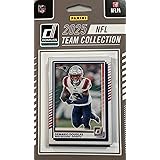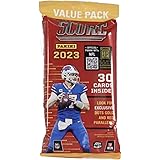
Unveiling the Hidden Heroes: Which Running Backs Are Gaining ‘Added Yards’ That Change the Game?
Ever wonder if we’re truly giving running backs their due credit, or just dazzled by flashy yards before contact? It’s a quirky conundrum — how do you measure the moves that make defenders look silly when the stat sheet barely notices? That’s where “added yards” step into the spotlight, flipping the script by tracking yards gained after the very first brush with a defender, not just the initial tackle attempt. This fresh lens reveals hidden gems among 146 FBS backs from the 2023 season — with Tennessee’s Jaylen Wright standing out like a neon sign in the night. His blend of speed, elusiveness, and smart play, especially in a spread offense that keeps defenders guessing (and often a step behind), underscores how savvy metrics can reshape how we scout NFL prospects. Curious about who else shines once you look beyond traditional numbers? Dive deeper into this data-driven rundown because the game’s evolving — and our way of sizing up talent should too. LEARN MORE.
Whether it’s evaluating the best running backs in college football or which college backs are the best NFL prospects, our game-charting data can help determine both.
As an example, there were 146 FBS running backs with at least 50 carries in the 2023 college football season who were tracked for something specific – added yards.
It’s become popular to keep track of running back yardage before and after contact, but those figures have limits: If a ball carrier simply makes a defender miss and never gets touched, he isn’t credited with a single yard after contact.
At the same time, we might not know much about yards before contact. How many were determined by great blocking or an offensive scheme, and how many were down to the running back’s own elusiveness?
By tracking yards after the first encounter with a defender rather than limiting to first contact, we can better understand the contributions of NFL Draft running back prospects.
Jaylen Wright of Tennessee, who according to some NFL Draft evaluations was the top back in the class, was a superstar of the added-yards statistic.
From his first encounter with a defender, he averaged another 4.66 yards per carry on runs when he faced a solo tackler – 11th among the 146 qualifying running backs.

Also, the 5-foot-10½, 210-pound Wright, whose 4.38-second clocking in the 40-yard dash at the 2024 NFL Combine was second among running backs, fared well even when defenders got their hands on him last season. His 3.39-yards-after-contact average put him tops among the 30 rushers who appear most frequently in NFL mock draft rankings.
Wright benefited from interacting with smaller groups of defenders who would naturally have a harder time bringing him down. Playing in Tennessee’s deep ball-heavy spread offense, his bad box percentage (25.2) was the lowest in the FBS running back class.
With no more than seven defenders lined up in the defensive box, Wright got less resistance than many of his peers.
Check out our MLB, NBA and NFL coverage. Follow us on X and Instagram for more!
The post Rating Running Backs Through ‘Added Yards’ appeared first on Opta Analyst.





























Post Comment